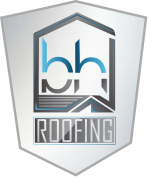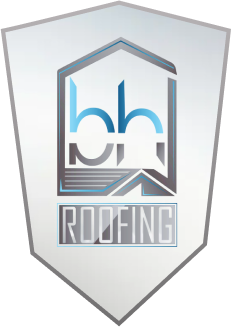When San Antonio homeowners notice their roof shingles beginning to curl, it often signals the start of roofing problems that shouldn’t be ignored. Asphalt shingle curling is particularly common in South Texas, where the intense heat and humidity create perfect conditions for roof deterioration to take place. This visible warping of roofing materials can compromise your home’s protection and lead to more serious issues if left unaddressed.
Asphalt shingles typically curl in two distinct patterns. “Cupping” occurs when the edges of the shingle turn upward, creating a concave center. “Clawing,” on the other hand, happens when the middle of the shingle rises while the edges remain flat against the roof. Each pattern tells a different story about what might be happening with your roof and its underlying structure.
Recognizing these early warning signs can help homeowners take action, potentially extending their roof’s lifespan and avoiding costly repairs down the road.
The Science Behind Shingle Curling: Weather and Material Factors
San Antonio’s climate plays a significant role in asphalt shingle deterioration. Our region experiences extreme temperature swings that can range from scorching triple-digit summer days to occasional freezing winter nights. This constant expansion and contraction cycle stresses shingle materials over time. The intense Texas sun delivers high UV radiation that breaks down the asphalt’s oils, causing it to dry out and contract while the fiberglass mat remains stable, resulting in the characteristic curling at edges and corners.
Not all shingles are created equal when it comes to resisting these harsh conditions. Manufacturing quality significantly impacts how shingles perform in our climate. Lower-quality shingles often have thinner asphalt layers and less durable reinforcement mats, making them more susceptible to curling after just a few years of San Antonio weather exposure. The material composition matters too — traditional organic-mat shingles tend to absorb more moisture and curl faster than fiberglass-based products.
Modern premium shingles incorporate advanced technology specifically designed to combat these issues. Features like specialized granule coatings that reflect UV rays, thicker asphalt layers, and stronger reinforcement materials significantly extend shingle lifespan. For San Antonio homeowners, investing in these higher-quality materials often proves cost-effective by delaying the onset of curling and other signs of damage that would require premature replacement.
Installation Issues That Lead to Premature Curling
Even the highest quality asphalt shingles can fail prematurely when installation problems undermine their performance. In San Antonio’s extreme climate, proper attic ventilation is absolutely critical in order to keep asphalt shingles in good condition. When ventilation systems are inadequate or improperly designed, excessive heat builds up in the attic space, often reaching temperatures above 150 degrees Fahrenheit during the summer. This intense heat attacks shingles from underneath, accelerating the loss of volatile oils and causing the bottom surface to shrink while the top remains stable, creating the curling effect.
Beyond ventilation issues, several other installation factors contribute significantly to shingle curling. Incorrect nailing techniques, such as overdriving nails or using too few fasteners, prevent proper shingle adhesion and create stress points that lead to deformation. Inadequate underlayment fails to provide the necessary moisture barrier, allowing humidity to penetrate and destabilize shingles from below. Poor roof deck preparation, including uneven surfaces or failing to replace damaged decking before installation, creates irregular stress patterns that manifest as curling over time.
Assessing the Severity: When Curled Shingles Become a Critical Problem
Not all shingle curling requires immediate action, but knowing when to call a professional roofer can save San Antonio homeowners from extensive damage. For roofs less than 10 years old, any significant curling typically indicates a serious problem rather than normal aging. Pay special attention to how many of the shingles are curling since isolated curling might suggest localized issues, while widespread curling across the roof’s surface often points to systemic problems like improper installation or ventilation deficiencies.
Curled shingles impact your roof’s primary ability to function in multiple ways. The main way is by creating gaps where water can easily enter the interior of the roof during heavy rain. These gaps also reduce your home’s energy efficiency by allowing conditioned air to escape, which is particularly problematic during our scorching summers when cooling costs already run high. Additionally, curled edges are more vulnerable to wind damage during storms, as they can catch air currents and tear away completely, exposing underlying roof components.
The severity of shingle curling becomes especially critical during extreme weather events. When tropical storm systems or severe thunderstorms hit the San Antonio area, curled shingles that seem manageable during dry periods can quickly become points of failure for your entire roofing system. Professional assessment becomes essential when curling affects more than 20% of your roof’s surface or when you notice interior signs of moisture infiltration, such as water stains or musty odors.
Temporary DIY Solutions vs. Permanent Professional Repairs
When you notice curling shingles on your San Antonio home, you might wonder if there are quick fixes you can handle yourself. For minor curling issues, some temporary DIY measures can help postpone more extensive repairs. During warm weather, gently reshaping curled shingles is possible; You simply have to lift the curled edge up carefully and apply a small amount of roofing cement underneath, then press the shingle flat and apply a dab of cement on top to secure it. This approach works best on slightly curled shingles that remain flexible and haven’t become brittle with age.
For emergency situations during storm seasons, applying roofing cement along curled edges can provide short-term protection against water infiltration. However, these DIY solutions should only be considered temporary measures. They won’t address the underlying cause behind why the shingles are curling, and it may only extend your roof’s functionality for a few months at most.
Most issues with shingle curling ultimately require professional intervention, especially when curling is widespread or severe. San Antonio homeowners should look for roofing contractors with specific experience handling asphalt shingle issues in our unique climate. Professional roofers can accurately diagnose whether the curling stems from installation problems, ventilation issues, or natural aging and recommend appropriate solutions. A qualified contractor will also ensure that any work that gets done meets local building codes and manufacturer specifications to protect your home properly.
Prevention Strategies for San Antonio’s Weather
Preventing shingle curling starts with a proactive maintenance approach tailored to San Antonio’s unique climate challenges. Homeowners should establish a seasonal inspection routine and check for early signs of curling after summer heat waves and following major storms. Spring inspections should focus on clearing debris from valleys and gutters, as trapped moisture accelerates deterioration. Fall maintenance should also include removing leaves and branches that can trap moisture against shingles during winter rains.
When selecting roofing materials for San Antonio homes, climate-appropriate choices make a significant difference in preventing premature curling. Shingles with high wind ratings and enhanced adhesive strips provide better resistance against severe storms. Cool roof technology, featuring highly reflective granules, reduces heat absorption by up to 30% compared to standard shingles, minimizing the amount of thermal stress that leads to curling. These specialized shingles maintain lower surface temperatures even during the hottest days, extending their functional lifespan considerably.
Proper attic insulation and ventilation form the foundation of any effective prevention strategy. A well-designed ventilation system maintains consistent attic temperatures and reduces moisture buildup that contributes to shingle curling. Ridge vents paired with soffit vents create optimal airflow that protects shingles from below. For maximum protection, San Antonio homeowners should consider radiant barriers that reflect heat away from the attic space, further reducing thermal stress on roofing materials and preventing the heat-related curling that shortens shingle life.
Long-term Roofing Solutions: Beyond Repairs to Replacement
Eventually, every San Antonio homeowner faces the decision between continuing to repair curling shingles or investing in a complete roof replacement. When curling affects more than 30% of your roof’s surface, replacement typically becomes more economical than making ongoing repairs. Other signs that your roof has reached the end of its serviceable life include granule loss filling your gutters, multiple leaks developing after repairs, and shingles that break rather than bend when touched. If your roof is approaching 15 to 20 years of age in our harsh climate, these curling issues generally signal system-wide failure rather than isolated problems.
Today’s roofing materials offer San Antonio homeowners significant advantages over older systems. Impact-resistant shingles provide superior protection against our frequent hailstorms while qualifying for potential insurance premium discounts. For homes facing extreme heat exposure, energy-efficient cool roof options can reduce cooling costs by reflecting up to 65% more sunlight than traditional materials. Many manufacturers now offer extended warranty options specifically designed for southern climates, with some premium systems carrying transferable warranties of 50 years or more.
When considering replacement, consulting with a local roofing professional who understands San Antonio’s specific challenges ensures you select materials engineered to resist curling and perform optimally in our climate. The right replacement system not only solves current problems but also provides decades of protection against our region’s unique weather patterns.
Expert Roof Repair and Replacement by BH Roofing
If you’re noticing signs of shingle curling on your roof, it’s vital to address these issues as soon as possible to prevent further damage to your home. At BH Roofing, we understand the unique challenges San Antonio homeowners face due to the harsh Texas climate. Whether your curled shingles require a simple repair or indicate a need for a complete roof replacement, our team of skilled professionals is equipped to provide the right solutions.
To discuss your roofing needs and schedule an inspection, call BH Roofing today at (210) 267-9029.


